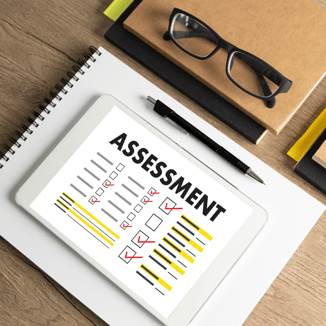3 Levels of Training Needs Assessment 
The Advantages of Conducting a Training Needs Assessment
A training needs assessment or TNA is a critical first step in any training program. A TNA is designed to figure out what your employees currently know and where there are knowledge gaps. When creating training, you want to ensure you address the root cause of your issue and not just the symptom of the problem. By conducting a training needs assessment, you can enjoy the following benefits:
-
Teach the right material: Before a training program starts, your assessment will help you figure out which policies, skills, and materials employees use daily. Then, your program can focus on the most important topics.
-
Narrow down your audience: Most likely, you have a blend of new and experienced employees. Your training needs assessment will help you figure out which employees need to be trained and how much training they need.
-
Use the right approach: A good training needs assessment will tell you if you need a new training program at all or if an alternative solution would be better.
-
Learn about your training needs: Often, managers believe they know what their employees need to know, but there could be gaps in their knowledge. An assessment will help validate the training requirement.
-
Prepare for specific jobs: Many jobs have entirely different training requirements. Instead of training everyone in the same way, you can learn which programs are best for specific positions.
The 3 Levels of Training Needs Assessment
-
The Organizational Level
Before you can focus on individuals in your company, you should look at your organization's overall training needs. What training programs will help your company reach its strategic objectives?
For example, an insurance company may notice that its sales team constantly gets negative feedback. By conducting a needs analysis at an organizational level, the company realizes its sales team needs additional training on customer service. Then, one potential solution could be that the company can require all sales personnel to go through customer service training.
-
The Operational Level
The next of the 3 levels of training needs assessment is at the operational level. This refers to the programs you need at a task or job level. Basically, you need to conduct a task analysis to see what type of skills employees need to perform certain jobs. You should ask yourself the following questions.
-
To meet performance standards, how should workers complete this task?
-
How do workers perform this job?
-
What are the performance standards?
-
What skills do employees need to achieve these performance standards?
The same insurance company can use an operational analysis to figure out new ways to increase the number of error-free claims. The company can consider the skills needed to process a claim. Then, the insurer can look at which training programs can help upskill their workforce.
-
The Individual Level
On an individual basis, you can see how well your employees are doing. One way to figure out each employee's ability is by conducting an individual assessment. Through an assessment, you can learn the answer to the following questions.
-
How do I want my employees to perform?
-
Do they have the right skills for this job?
-
What is holding my employees back?
-
What kind of training programs can help my workers reach the desired performance standards?
Ready to get started with a Training Needs Assessment, but not sure where to begin?
Get our FREE eBook Download: '10 Questions to Answer for TNA Success'


